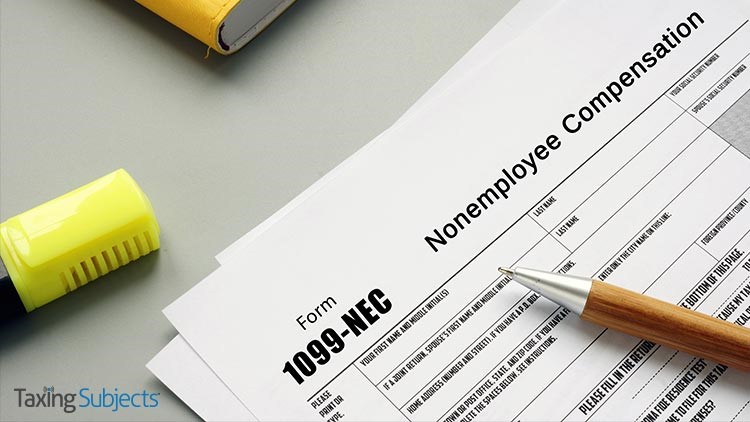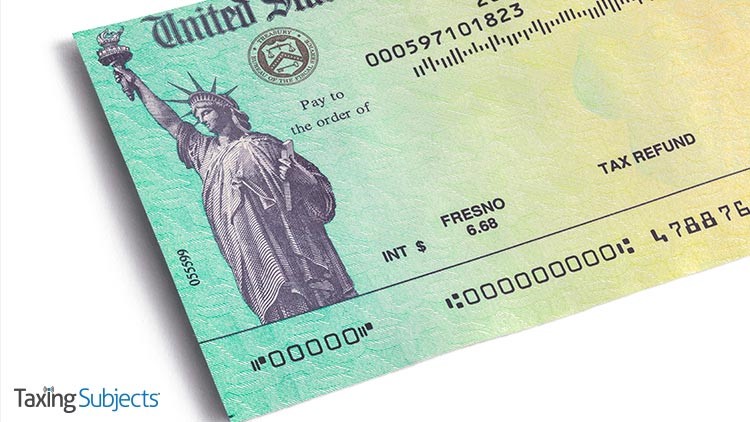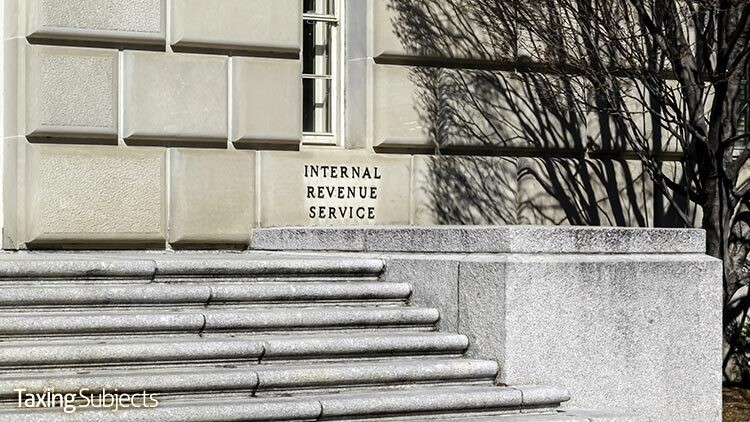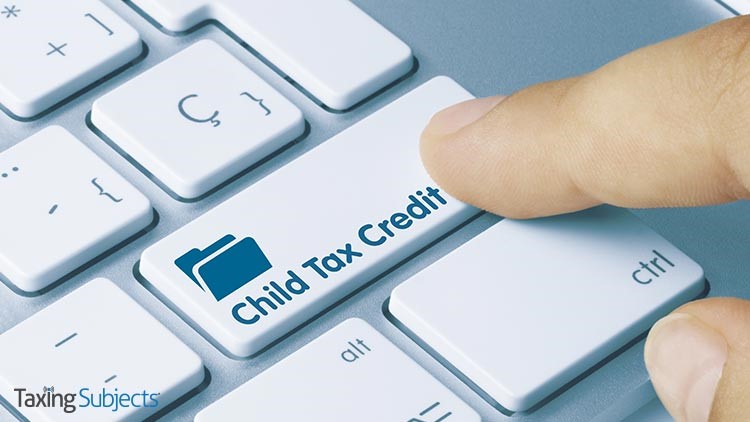by | Jun 25, 2021 | Tax Tips and News
The Internal Revenue Service has unveiled a pair of new tools to help families manage and monitor advance monthly payments of the Child Tax Credit, made possible by the American Rescue Plan.
The new tools join the Non-Filer Sign-up Tool that helps families who aren’t normally required to file an income tax return to file a return and register for the Child Tax Credit.
The Child Tax Credit Eligibility Assistant allows families to determine if they qualify for the advance credit just by answering some questions.
The Child Tax Credit Update Portal can verify taxpayers are eligible for the advance CTC payments. This tool can also be used to unenroll taxpayers from the advance payments if they choose, so they can get a lump sum when they file a tax return next year.
All families need to access the password-protected Portal is internet access and a computer or smartphone.
The Child Tax Credit Eligibility Assistant and the Child Tax Credit Update Portal are both available now on IRS.gov.
“IRS employees continue to work hard to help people receive this important credit,” IRS Commissioner Chuck Rettig said. “The Update Portal is a key piece among the three new tools now available on IRS.gov to help families understand, register for and monitor these payments. We will be working across the nation with partner groups to share information and help eligible people receive the advance payments.”
More features are on the way
A number of updates and upgrades are scheduled for the Child Tax Credit Update Portal by the IRS. Families will soon be able to use the portal to check the status of their payments. Later this month, the IRS expects taxpayers to be able to update bank account information for advance CTC payments. Next month, an upgrade is planned that will let taxpayers change their mailing address.
In late summer and fall, taxpayers should be able to use the Portal to update their family status and changes in income. More on these improvements can be found on the tool’s FAQs on IRS.gov.
Ahead of all the upgrades, though, the initial version of the Portal and its unenrollment feature are worthy of the spotlight.
Some families might prefer to wait until the end of the year and get the full credit amount as a tax refund from their 2021 return, instead of getting the advance payments. The Portal gives these taxpayers an easy way to opt out of the monthly CTC payments.
Unenrollment might also help those families that no longer qualify for the Child Tax Credit – or think they won’t qualify when they file a 2021 tax return.
There are three main ways this could happen:
- Their income in 2021 is too high to qualify them for the credit.
- Someone else (an ex-spouse or another family member, for example) qualifies to claim their child or children as dependents in 2021.
- Their main home was outside of the United States for more than half of 2021.
ID verification required for portal access
Users who want to access the Child Tax Credit Portal first have to verify their identity. Those without an existing IRS account will have to verify their identity with a kind of photo identification that uses ID.me, a trusted third-party vendor for the IRS. This important security check will keep taxpayers’ accounts secure and shielded from identity theft.
Users who have an existing IRS username or an ID.me account can use those credentials to sign in, without creating a new account.
Taxpayers without internet access or who otherwise can’t use the online tool to unenroll should contact the IRS using the telephone number included in their IRS outreach letter.
Check eligibility first
The first stop for taxpayers and their families should be the Child Tax Credit Eligibility Assistant. Here, families can see if they are qualified for the Child Tax Credit and its advance payments.
This simple tool uses a series of questions to determine if the taxpayer qualifies.
It should be noted that this is merely an eligibility tool, not a site to register, so no personal information is requested or used. But it is critical in determining whether the taxpayer should go on and either file a tax return or register using the Non-Filer Sign-up Tool.
For details on the provisions of the Advance Child Tax Credit, check out our Taxing Subjects blog on the CTC or visit the IRS web page Advance Child Tax Credit Payments in 2021.
The IRS page has direct links to all three tools mentioned here, a list of frequently asked questions and other resources.
Sources: IRS announces two new online tools to help families manage Child Tax Credit payments.
– Story provided by TaxingSubjects.com
by | Jun 24, 2021 | Tax Tips and News
Most times, businesses pay their employees for the work they do, and set aside a portion of those wages to in turn, pay Uncle Sam. But what if the business has to pay someone who isn’t technically an employee?
Enter nonemployee compensation.
Form 1099-NEC, Nonemployee Compensation, is used to help collect taxes from those who get paid for services to a company or nonprofit organization while not being a full employee.
The law demands that anyone who earns $600 or more in nonemployee compensation in a year has to report the payments using Form 1099-NEC.
The deadline for filing Form 1099-NEC is Jan.31. For 2021 returns, there is no automatic 30-day extension of time to file. However, hardship cases may be able to qualify for an extension.
The IRS says a Form 1099-NEC has to be issued for each person that a business or nonprofit group paid for:
- Services performed by someone who is not their employee (including parts and materials);
- Cash payments for fish (or other aquatic life) they purchased from anyone engaged in the trade or business of catching fish; or
- Payments to an attorney.
Some specific kinds of payments don’t have to be listed on the Form 1099-NEC. For a full list, see the Instructions for Forms 1099-MISC and 1099-NEC on the IRS website.
Backup Withholding
If a person due nonemployee compensation hasn’t supplied the payer with a Taxpayer Identification Number (TIN), or if the IRS says the payee’s TIN doesn’t match their records, backup withholding may be necessary.
A valid TIN can be a Social Security number; employer identification, individual taxpayer identification or adoption taxpayer identification.
Backup withholding may apply to most kinds of payments that are reported on Form W-2G and the various Forms 1099. It is defined as the taxpayer’s requirement to withhold a certain percentage of tax from income not otherwise subject to withholding.
The person or business paying the taxpayer doesn’t generally withhold taxes from some kind of payments, yet there are cases when the payer is required to withhold a percentage of tax due the IRS.
At present, the current backup withholding tax rate is 24%.
For more information see the Instructions for Forms 1099-MISC and 1099-NEC; the General Instructions for Certain Information Returns; or Publication 15, Employer’s Tax Guide (Circular E).
Sources: Businesses must report nonemployee compensation and backup withholding; Instructions for Forms 1099-MISC and 1099-NEC.
– Story provided by TaxingSubjects.com
by | Jun 23, 2021 | Tax Tips and News
It’s said that the early bird gets the worm. Some early-bird taxpayers could see a real benefit from their promptness to file their taxes, and it’s worth more than mere worms.
The legislative package known as the American Rescue Plan of 2021 was passed into law in March of this year. Normally, unemployment benefits are taxable.
The American Rescue Plan, or ARP, excluded up to $10,200 in unemployment compensation from each taxpayer’s taxable income. But some people filed their returns and paid taxes on the full amount of their unemployment benefits before the ARP became law, so the IRS is working to send those taxpayers a refund.
The Internal Revenue Service says it’s refunding those surplus employment taxes paid, in order to spare early-bird filers the need to file an amended return. Not all early birds, however, will get a refund.
Some taxpayers will see their overpayment applied to taxes due or some other debts. For other taxpayers, there may not be a change at all.
While the ARP exclusion takes up to $10,200 out of a taxpayer’s taxable income, that’s not the amount of the refund taxpayers will get.
Other American Rescue Plan adjustments
A decrease in a taxpayer’s taxable income could also affect their eligibility and benefit from the earned income tax credit (EITC), the premium tax credit or the recovery rebate credit. The IRS is making corrections for these credits as well.
The agency says it can adjust the returns of single taxpayers with no children but who are eligible for EITC. Taxpayers who claimed the EITC and have qualifying children identified can also have their returns adjusted.
However, taxpayers with qualifying children and who become eligible for EITC after the exclusion is calculated may have to file an amended return to claim new benefits.
Those taxpayers who qualify for an adjustment on their return should get a letter from the IRS within some 30 days that explains just what kind of adjustment was made to their return and the amount of the adjustment.
An adjustment could come in the form of a refund, payment of an IRS tax debt or a payment offset for other authorized debts.
An offset occurs when the amount of the refund would effectively wipe out an amount the taxpayer owes, and no money changes hands. Offsets can be used to erase include past-due federal tax, state income tax, state unemployment compensation debts, child support, spousal support or certain federal non-tax debts, such as student loans.
The IRS says, in most cases, taxpayers don’t have to do anything when an adjustment is needed. But the IRS website specifies there are certain circumstances where an adjustment makes filing an amended return beneficial:
“If as a result of the excluded unemployment compensation you now qualify for deductions or credits not claimed on your original return, you should file an amended return. For example, if you did not claim the Earned Income Tax Credit (EITC) on your originally filed return because your AGI was too high, but the exclusion allowed for unemployment compensation now reduces your AGI, you should file an amended return to claim the credit if now eligible.”
For more information, see Tax Treatment of Unemployment Compensation, or the Unemployment Compensation Exclusion FAQs on the IRS website, IRS.gov.
Sources: Taxpayers may receive a refund for taxes paid on 2020 unemployment compensation; Tax Treatment of Unemployment Compensation.
– Story provided by TaxingSubjects.com
by | Jun 19, 2021 | Tax Tips and News
The IRS announced that it is now also offering online tax information in Spanish, Chinese (simplified and traditional), Korean, Russian, Vietnamese, Haitian-Creole, and more.
IRS.gov web pages have links to available translations on the right side, just below the title. Taxpayers can also click on the language dropdown arrow at the top of many IRS.gov pages, displaying the current language and listing other available translations.
What are the affected online resources?
The IRS has a Languages page where visitors can get basic tax information, such as how to check the status of a refund, pay taxes or file a federal return. The page is available in 20 languages.
The Let Us Help You page is available in seven languages.
A number of tax forms offer translation into multiple languages. The Form 1040, for example, has a Spanish language version which includes its related instructions.
The Form 1040 Schedule LEP, in English and Spanish, with instructions in English and 20 other languages, can be filed with a tax return by taxpayers who would rather communicate with the IRS in a language other than English.
A number of different tax forms and publications, such as Publication 17, Your Federal Income Tax, are available in Spanish, Chinese Simplified, Chinese Traditional, Korean, Russian and Vietnamese.
Information on Economic Impact Payments can be viewed on IRS.gov in seven languages. The Get My Payment tool, which checks the status of an Economic Impact Payment, is only available in English and Spanish at this time.
Taxpayers looking for information on the 2021 Advance Child Tax Credit payments can find it in any one of seven languages. The Taxpayer Bill of Rights, as outlined in Publication 1, Your Rights as a Taxpayer, is also available in seven languages.
IRS social media diversifies
It seems everybody has an app these days, and the IRS is no different. Their IRS2Go app is available in English and Spanish from the Amazon App store, the Apple App Store or Google Play.
The IRS’ YouTube channel is multilingual, offering helpful videos covering a wide array of tax topics.
The IRS Facebook page is available in Spanish, and anyone can get the latest IRS tax news and information in Spanish through the Twitter account @IRSenEspanol.
The IRS has also has created individual Twitter Moments in six languages, highlighting key messages in Spanish, Vietnamese, Russian, Korean, Haitian Creole and Chinese.
To get news releases, tax tips and other updates in Spanish from the IRS, taxpayers can subscribe at Noticias del IRS en Español.
Assistive technology formats are available
IRS.gov offers content in a variety of file formats to accommodate those using assistive technology, including screen-reading software, refreshable Braille displays and voice recognition software.
Hundreds of tax forms and publications can be downloaded and viewed in text-only, Braille-ready files, browser-friendly HTML, accessible PDF and large print. Any software that reads text can open and read these text files.
For details, visit the Accessibility page of IRS.gov.
Source: IRS offers information and resources in a variety of multilingual and alternative formats.
– Story provided by TaxingSubjects.com
by | Jun 18, 2021 | Tax Tips and News
The Internal Revenue Service has rolled out a new online tool that’s built to help families register for monthly Advance Child Tax Credit payments. The tool is tailored to the needs of families who are eligible for the advance payments, but don’t normally file an income tax return.
The Non-Filer Sign-Up tool, though, does more than just register taxpayers for the CTC payments. It can also help these taxpayers register for the third round of Economic Impact Payments or claim the Recovery Rebate Credit for any of the first two rounds of EIPs they may have missed.
The challenge for the IRS is to get eligible individuals who don’t normally make enough income to file a yearly tax return to give their information to the agency so they can actually receive the CTC advance payments. The IRS needs the basic information—such as name, address, Social Security numbers and information on dependents—to figure and issue the CTC advances.
IRS Commissioner Chuck Rettig says many times, these individuals and families may have little or no income; they may even be experiencing homelessness, or be a part of another underserved group.
“We have been working hard to begin delivering the monthly Advance Child Tax Credit to millions of families with children in July,” said Commissioner Rettig. “This new tool will help more people easily gain access to this important credit as well as help people who don’t normally file a tax return obtain an Economic Impact Payment. We encourage people to review the details about this important new effort.”
No action needed by most eligible taxpayers
The new tool should not be used by families who’ve already filed—or plan to file—2019 or 2020 income tax returns. Also, those who want to claim other tax credits, such as the Earned Income Tax Credit (EITC) for low- and moderate-income families, shouldn’t use the online tool, but should file a regular tax return instead.
The IRS also reminds that there are scams related to the Advance Child Tax Credit payments and Economic Impact Payments. The only way to get either of these payments is to either file a tax return with the IRS, or to register online using the Non-Filer Sign-Up tool. It is available only on IRS.gov. Any other option is a scam.
For more information on the Advance Child Tax Credit payments, check out our Taxing Subjects blog.
More tools are on the way
The IRS says it will update its Advance Child Tax Credit 2021 page in the coming weeks with some new tools, including:
- An interactive Child Tax Credit eligibility assistant to help families determine whether they qualify for the Advance Child Tax Credit payments.
- Another tool, the Child Tax Credit Update Portal, will initially enable anyone who has been determined to be eligible for advance payments to see that they are eligible and unenroll or opt out of the advance payment program. Later, it will allow people to check on the status of their payments, make updates to their information and be available in Spanish.
Source: IRS unveils online tool to help low-income families register for monthly Child Tax Credit payments.
– Story provided by TaxingSubjects.com
by | Jun 16, 2021 | Tax Tips and News
The American Rescue Plan (ARP) put some sweeping changes in place to help the U.S. tax code deal with the effects of the coronavirus pandemic. To help provide guidance to families and small business who might claim some of ARP’s major credits, the IRS has issued two sets of frequently asked questions or FAQs.
The American Rescue Plan modified the Child and Dependent Care Credit as well as the Paid Sick and Family Leave Credit to give some help to families and small-to-mid-sized businesses coping with the economic fallout of the pandemic.
The two separate sets of FAQs have information on eligibility, how to calculate the credits, and how to claim the credits.
Here’s a breakdown.
Child and Dependent Care Credit
The American Rescue Plan made some major changes to the credit for 2021, raising the cap on work-related expenses for qualifying care when the credit is figured. Eligible taxpayers in 2021 can claim qualifying work-related expenses up to:
- $8,000 for one qualifying person, up from $3,000 in prior years, or
- $16,000 for two or more qualifying persons, up from $6,000 in prior years.
The IRS notes that “taxpayers are also required to have earnings,” and “the amount of qualifying work-related expenses claimed cannot exceed the taxpayer’s earnings.”
ARP also boosts the maximum percentage of expenses that can be applied to the credit. It also changes how the credit phases out for taxpayers with higher incomes, while making the credit refundable for those who qualify.
With a maximum credit rate of 50%, those with the maximum amount of work-related expenses would qualify for $4,000 credit for one qualifying person; $8,000 for two or more.
A qualifying person for this credit is defined as a dependent, under the age of 13 – or a dependent of any age or a spouse who’s incapable of taking care of themselves and who lives with the taxpayer for more than half the tax year.
Employer-provided benefits for dependent care have to be subtracted from total work-related expenses when calculating the credit. This would include expenses paid from a flexible pending account.
The American Rescue Plan is expected to increase the number of taxpayers who qualify for the credit.
The percentage of work-related expenses allowed when figuring the credit goes down as the taxpayer’s income goes up. This hasn’t changed from prior years. But ARP does open the door to more qualified taxpayers with its new maximum 50% credit rate.
The new law pushes the beginning of the credit’s phaseout to $125,000 in adjusted gross income. At that point, the 50% credit percentage starts to go down as income goes up, drying up altogether for those who earn more than $438,000 for the year.
This credit is fully refundable for the first time in 2021, meaning a taxpayer can get the credit even if they don’t owe any federal tax.
Eligible taxpayers must live in the United States for more than half the year, although special rules are in place for American military personnel who are stationed outside the U.S.
Form 2441, Child and Dependent Care Expenses, is used to claim the credit for 2021. Taxpayers claiming the credit will need a Social Security number or a valid taxpayer identification number (TIN) for each qualifying person.
Refer to the instructions for Form 2441 for more information.
Paid Sick and Family Leave Credits
Employers who provide paid sick and family leave to their workers related to COVID-19 circumstances can get reimbursed through the Paid Sick and Family Leave Credit. This same credit is open to self-employed individuals.
The credit qualifies employers who allow paid time off due to illness from COVID-19, time off to care for a family member with COVID-19, even time off related to receiving the COVID-19 vaccination shots.
For this credit, the American Rescue Plan stands on the shoulders of legislation that went before to give employers some help for providing benefits to their workers.
The Families First Coronavirus Response Act (FFCRA) and the COVID-related Tax Relief Act of 2020 provided the foundation that ARP amends and extends.
ARP specifically expands the existing code to allow the credit in cases where the employee is waiting for a diagnosis or test for COVID-19, getting a COVID-19 vaccine, or recovering from the effects of a vaccine.
In addition, ARP allows eligible employers to claim the credit for paid family leave wages for all the same reasons as paid sick leave wages.
The IRS FAQs help employers with information on how they can claim the paid sick and family leave credits, how to file for the credits, calculate the credit amounts—most importantly for some employers, how to get advance payments or refunds of the credits.
ARP paid leave credits are tax credits against the employer’s share of Medicare tax. The credits are refundable, meaning the employer is entitled to the full amount of the credit to the extent it exceeds the employer’s share of Medicare tax.
Eligible employers can anticipate the credits they claim by withholding the federal employment taxes they would have deposited otherwise. This includes federal income tax withheld from workers, the workers’ share of Social Security and Medicare taxes, and the employer’s share of Social Security and Medicare taxes for all employees up to the amount of their share of the credit.
If the employer doesn’t have enough federal employment taxes on deposit to cover the anticipated credits, the employer can ask for an advance of the credit using Form 7200, Advance Payment of Employer Credits due to COVID-19.
Comparable credits can be claimed by self-employed taxpayers using Form 1040, U.S. Individual Income Tax Return.
The tax provisions of the American Rescue Plan has more information. Details can be found in the other provisions to help taxpayers recover from pandemic impacts. Check out the FAQs on those and other provisions.
Source: IR-2021-128
– Story provided by TaxingSubjects.com






